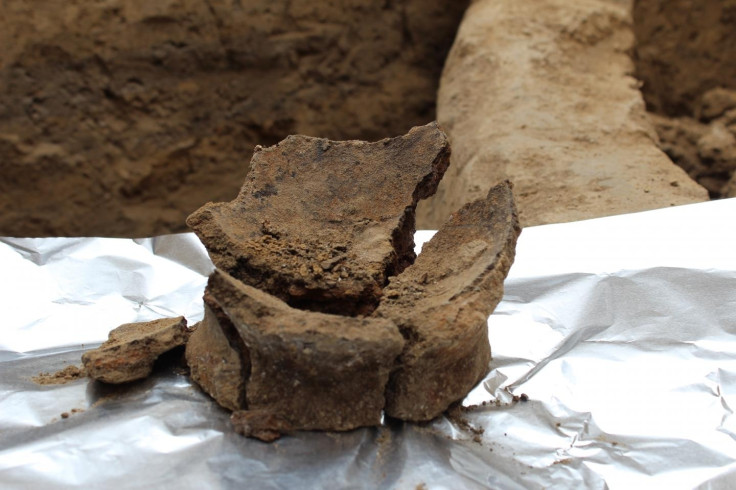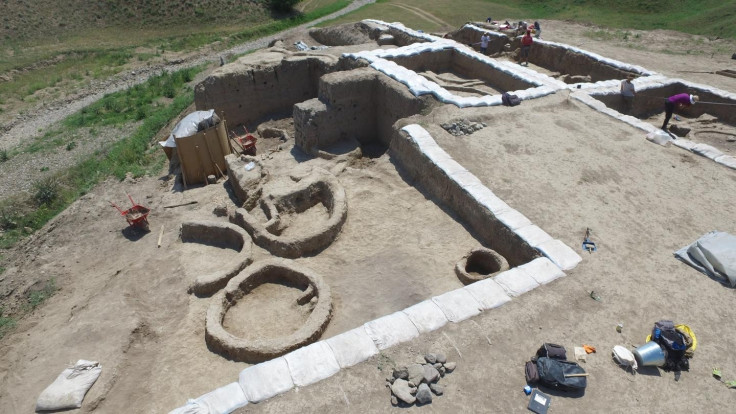New discovery shows our prehistoric ancestors were making wine 8,000 years ago
Previously, it was thought that the first wine production began around 5,400-5,000 BCE in Iran.

Archaeologists working in Georgia have uncovered the earliest evidence of winemaking anywhere in the world, pushing back the previously accepted date by 600-1,000 years.
Until now chemical evidence suggested that the first wine production began around 5,400-5,000 BCE in a region of the Zagros Mountains in Iran. But now, an international team of researchers say the practice actually began around 6,000 BCE in the South Caucuses, on the border of Eastern Europe and Western Asia.
Pottery fragments recovered from two Early Neolithic sites called Gadachrili Gora and Shulaveris Gora – which lie around 50km south the Georgian capital Tbilisi – were found to contain compounds associated with wine, according to researchers from the University of Toronto and the Georgian National Museum. The findings are published in the journal Proceedings of the National Academy of Sciences.
"We believe this is the oldest example of the domestication of a wild-growing Eurasian grapevine solely for the production of wine," said Stephen Batiuk, co-author of the study from the University of Toronto.
"The domesticated version of the fruit has more than 10,000 varieties of table and wine grapes worldwide. Georgia is home to over 500 varieties for wine alone, suggesting that grapes have been domesticated and cross-breeding in the region for a very long time."
The Neolithic Period (around 15,200 BCE to 2,000 BCE) was characterized by the beginning of farming, the domestication of animals, the development of crafts such as pottery and weaving, and the production of polished stone tools.
"Pottery, which was ideal for processing, serving and storing fermented beverages, was invented in this period together with many advances in art, technology and cuisine," said Batiuk.
"In essence, what we are examining is how the Neolithic package of agricultural activity, tool-making and crafts that developed further south in modern Iraq, Syria and Turkey adapted as it was introduced into different regions with different climate and plant life," he said.
"The horticultural potential of the south Caucasus was bound to lead to the domestication of many new and different species, and innovative 'secondary' products were bound to emerge."

Using archaeological, chemical, botanical, climatic and radiocarbon data, researchers claim that the Eurasian grapevine Vitis vinifera was abundant in the region in early Neolithic times and benefited from ideal environmental conditions, similar to wine-producing regions such as Italy and the south of France today.
"Our research suggests that one of the primary adaptations of the Neolithic way of life as it spread to Caucasia was viniculture," Batiuk said. "The domestication of the grape apparently led eventually to the emergence of a wine culture in the region."
Batiuk thinks that the drinking and offering of wine played an important role in many aspects of life in the ancient Georgian society from medical practice, to celebrations of births and deaths and everyday meals.
"As a medicine, social lubricant, mind-altering substance, and highly valued commodity, wine became the focus of religious cults, pharmacopeias, cuisines, economics, and society throughout the ancient Near East," he said.
"The infinite range of flavors and aromas of today's 8,000-10,000 grape varieties are the end result of the domesticated Eurasian grapevine being transplanted and crossed with wild grapevines elsewhere over and over again," he said. "The Eurasian gravepine that now accounts for 99.9% of wine made in the world today, has its roots in Caucasia."




















